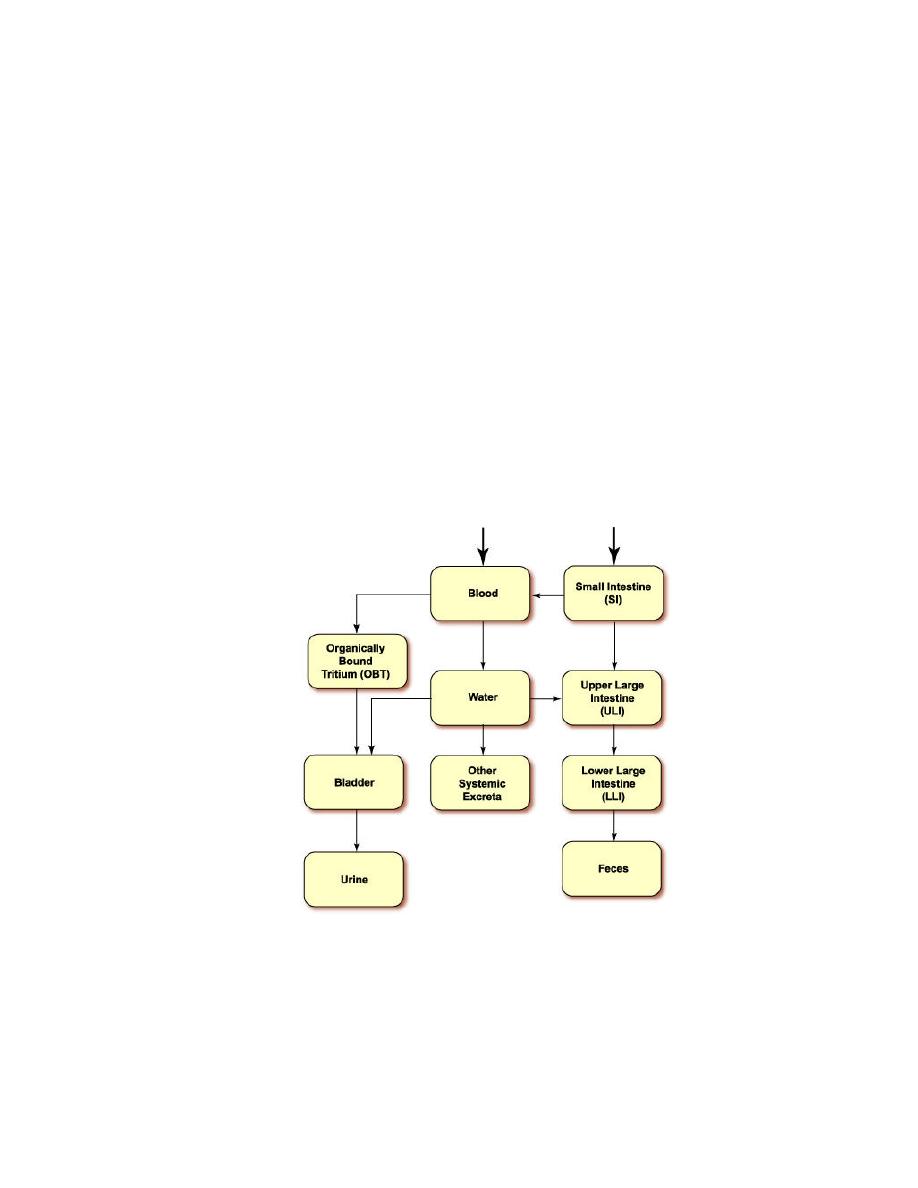 |
|||
|
|
|||
|
|
|||
| ||||||||||
|
|  DOE-HDBK-1184-2004
Note: "Other systemic excreta" refers to ICRP Publication 23 and includes insensible losses, breath,
sweat, diffusion, and transpiration.
Tritium absorbed from the respiratory and GI tracts is assumed to be in the form of tritiated
water (HTO) and to behave exactly like HTO that was absorbed directly into the
bloodstream. The systemic biokinetic model is discussed in more detail in Section 5.1.1.
Material cleared to the GI tract may be dissolved and absorbed into the bloodstream or
cleared to the feces. The ICRP 30 GI tract biokinetic model is used to quantify these
processes, but some modifications have been made to the dosimetric model. More details
on the biokinetic and dosimetric models are provided in section 5.1.2.
5.1.1
The Systemic Biokinetic Model
The systemic biokinetic model and relevant portions of the GI tract model are
shown in Figure 5-2. STC particles that dissolve in the respiratory tract release
tritium that is converted to HTO and absorbed into the bloodstream. STC particles
that dissolve in the GI tract are also converted into HTO and absorbed into the
bloodstream from the small intestines (SI). The fraction of STC that enters the GI
tract and is subsequently absorbed from the SI is referred to as f1.
Figure 5- 2. Systemic Biokinetic Model for Tritiated Water Coupled to the GI Tract
Model.
23
|
|
Privacy Statement - Press Release - Copyright Information. - Contact Us |